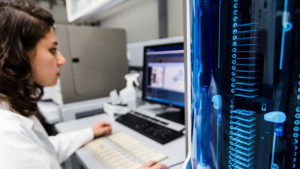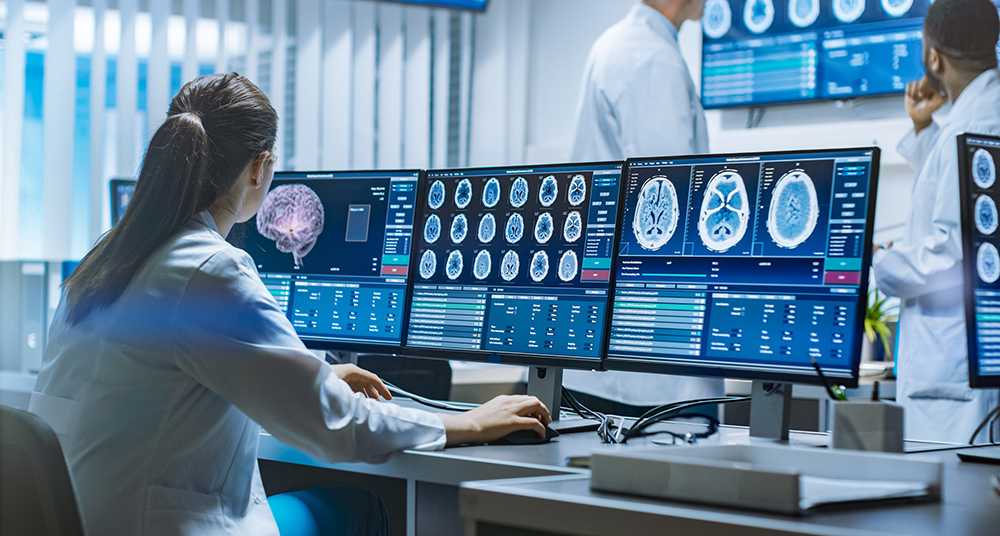Health Technology applied is essential to ensure the quality of life for patients and health professionals.
Have you ever imagined living without resources like electricity, computer, phone or internet?
For us who live in the post-digital era, it is practically impossible to imagine a life without the ease provided by current technology. Now, imagine what the health area would be like without some innovations.
Without vaccines, antibiotics, prostheses, pacemakers, transplants, radiodiagnostic exams, the whole area of health would still be dealing with incurable diseases.
As research by SciELO on Technological Innovation in Health states, technology brings several benefits, mainly for the speed of diagnosis and treatment of diseases.
“This modern technology, created by man, at the service of man, has contributed on a large scale to the solution of previously insoluble problems, and can revert to better living and health conditions for people.”
Health professionals know better than anyone that advances in medicine never stop.
Read on and discover the true power of technology applied to health.
Main advances of Health technology
New drugs, instant communication, the artificial production of human cells, are just a few examples of technologies that are helping the work of thousands of scientists and health professionals.
Investment in advancing the health area is essential, especially when it comes to delivering more integrated and efficient treatment for patients.
Here are some technological innovations that are changing health.
1. Telemedicine
Telemedicine enables health professionals to meet their patients remotely through its branches as Teleconsultation, tele diagnosis, tele surgery and Tele radiology.
According to CFM, Telemedicine provides an agile and efficient service to patients, which allows personalization of treatment by doctors.
“Telemedicine is a natural evolution of healthcare in the digital world. Every day, her ability to improve quality, equity and accessibility is becoming more indisputable.”
Among its main advantages, we can mention:
- The democratization of access to health care;
- More assertiveness in diagnoses;
- Real-time carefor patients;
- Cost reduction;
- The decrease in overcrowding in health facilities;
- Data security excellencefor healthcare professionals and patients, even outside the office;
- Continuity of medical care in any situation.
To practice Telemedicine, it is necessary to have secure platforms, developed exclusively for the care of patients.
2. Medical software
The medical software are excellent platforms for healthcare professionals seeking to centralize your information in a safe place, in addition to having features that optimize time and help in management.
In the medical market, there are several software options available. We will highlight the differentials of quality medical software:
- Bank-level encryption: prevents third parties from reading or capturing information from the doctor’s office and patients;
- Different levels of access: Each professional has a unique login and password, ensuring that patients’ confidential data is accessed only by authorized doctors;
- Cloud storage: all data is saved in the cloud, not on the electronic device, which guarantees the impossibility of total loss of information;
- Customizable electronicmedical record: the electronic medical record can be completely personalized. Thus, you make the service more agile and have more time to care for patients;
- Management: Functionalities such as medical agenda, financial control, reports and graphs, assist in excellent medical management. That way, you also guarantee the success of your business;
- Marketing: Good software also has a medical marketing module, which directly influences your loyalty and attracting patients;
- Efficient support team: it’s not just the software that must be efficient. The company’s technical support should also be available to resolve any queries quickly.
- In addition, you can also notice how the development of medical software features is carried out. After all, a company that seeks continuous improvement may be the best option for your routine.
3. Genetic mapping
The combination of technology and medical science also allows for assertive diagnostics through DNA mapping.
The mapping makes it possible to identify changes in genes, which can indicate tumours, hereditary diseases and other serious conditions.
Genetic mapping is a major step forward. After all, it will be possible to “predict the future” of the patient and take preventive measures before an illness strikes him.
This factor is essential to choose the best form of treatment to be followed, as it facilitates and makes safer the decision-making of specialists even before the appearance of pathologies.
4. Surgical robots
The first robot surgeons appeared in 1998. The Broussais Hospital, in Paris, was the place where the first robot surgeries took place.
Nowadays, in addition to the surgeries that can be performed remotely by health professionals, virtual reality simulations also assist in preoperative planning and training of specialists.
A Nature Communications study says that surgical robots, managed by trained health professionals, can improve the quality of life for patients and doctors themselves.
“Robotic surgeries reduce surgical trauma (surgeries are less invasive and require less tissue manipulation), hospitalization and post-surgery pain. In addition, they increase patient satisfaction and recovery rates. ”
Another innovation emphasized in the study is distance surgery, which increases the range of surgeries performed by specialists, especially for patients who live in places away from urban centres.

5. Wearables
The wearables are also known as smart wearable devices.
They are able to monitor patients’ vital signs, such as heart rate, sleep quality, and send all information directly to a healthcare professional or medical establishment.
Smart watches like Apple Watch and Xiaomi Smartwatch are practical examples of wearables that help prevent the health of their users.
Unlike some years ago, today patients can know test results by devices and even identify the distance they travel every day from their smartphone.
- Big Data
Big Data is the process of storing a large amount of data, to analyze information quickly, identifying patterns and connections of information.
The Big Data, due to its rapid analysis of thousands of information, can assist in solving challenges and opportunities for innovation in health.
Here are some advantages that this whole process can provide for the medical environment:
Effective decision making: with an assertive analysis, it is possible to observe patient behaviour patterns. A Big Data can identify which medical interventions are most needed in a specific area of a city or state, based on an analysis of health data;
Reduced research costs: with the integration of data in the health area, Big Data can gather the medical records of all patients from public and private networks, allowing more assertive research on the health of the entire population.
Definitely an essential advance for the health area, mainly for the planning of medical institutions.

- Artificial Intelligence
The Artificial Intelligence (AI), also known as intelligence machine or machine learning, is the field of science that develops intelligence mechanisms as software and robots.
This intelligence is similar to human intelligence. However, it does not have the limitations of a human being.
A famous example of AI in healthcare is the IBM Watson supercomputer, which can analyze thousands of content in just seconds, helping to solve clinical cases.
According to a study by the McKinsey Global Institute on the Professional Skills of the Future, AI will change the interaction between doctors and patients.
Routine activities such as monitoring patients’ vital signs will no longer be the responsibility of healthcare professionals, who will be increasingly developing digital skills.
“These technologies will bring countless benefits in formats of greater productivity, improved performance of professionals, and they will also change the skills needed for future professionals.”
- BI
BI, known as Business Intelligence and Business Intelligence, is constantly confused with the concept of Big Data.
Unlike Big Data, in which an immense amount of information is analyzed to identify patterns or connections, BI is a set of data storage and analysis processes, aimed at specific decisions.
In other words, its main purpose is to use the information to direct the next actions taken by a doctor’s office or any institution.
Your data collection is done at the right time, for planning. BI in health management is essential to ensure that a decision is made in a certain way, with quality and agility.
Have you seen the power of technology applied to health? If you know of other advances that were not mentioned in the article, leave a comment below to share your experience.


 Home
Home









